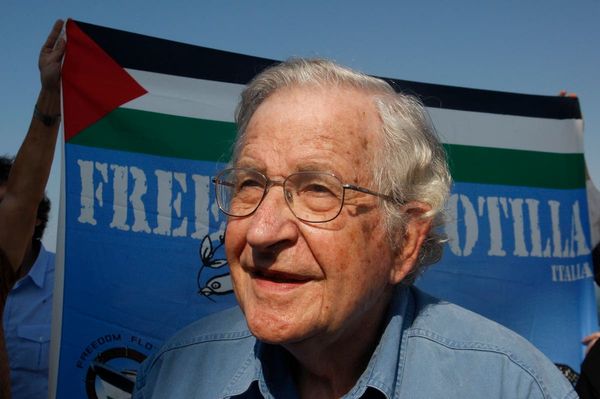
Gather the animals two-by-two, because it’s really, actually happening: The Dallas Cowboys have their best shot at winning a Super Bowl since Dez Caught It.
The team’s dismantling of the Eagles last week leaves them in a tier of two in the NFC: it’s the Cowboys, Niners and then a drop to the Eagles and Lions. If Dallas can secure home-field advantage throughout the playoffs, they should enter the postseason as the favorites to come out of the NFC, despite their thorny record v the Niners.
Dak Prescott is the league MVP. In fact, we can go further: Mike McCarthy should be at the forefront of any Coach of the Year conversation.
Don’t scoff or laugh just yet. McCarthy doesn’t have as strong a narrative to tell as Sean McVay. He isn’t as likeable as Mike McDaniel or Dan Campbell. He hasn’t engineered as stark a turnaround as DeMeco Ryans or Shane Steichen. But his case is just as solid.
McCarthy has long been cast as bozo, the Joey in the NFL’s production of Friends. And not just any old bozo: A lucky bozo. He’s the coach who lucked into Aaron Rodgers, and when that relationship frayed, he landed a plum job with the Cowboys, where he would work with one of the most gifted rosters in the league and function as some sort of puppet for Jerry Jones.
But that theory ignores a crucial fact: Everywhere McCarthy goes, he wins. McCarthy has averaged 10 wins a season, including 11 seasons with 10 or more wins in his 17 seasons as a head coach. He’s 11th all-time in win percentage among coaches who’ve won 100-plus games, ranking fifth among active coaches. He has a better winning percentage than John Harbaugh, Bill Walsh and Tom Landry. As the Cowboys coach, McCarthy is 38-23 and has a shot to become only the second coach in franchise history to win 12 games in three consecutive seasons. Before his arrival, Dallas hadn’t won 10 games in consecutive years since 1996.
Was he lucky to work with Rodgers throughout his time in Green Bay? Sure. But he was also instrumental in tearing down Rodgers’ broken college mechanics and rebuilding them in a way that allowed him to become the Aaron Bleeping Rodgers who scorched all before him during his prime. Things fractured at the end of the McCarthy-Rodgers run in Green Bay, but not before McCarthy had radically overhauled his offensive philosophy to build a first-of-its-kind ‘second phase’ system that married Rodgers’ out-of-time artistry with the kind of rhythm passing game that McCarthy is synonymous with constructing.
Matt LaFleur deservedly lapped up the plaudits for Rodgers’ back-to-back MVP seasons, but the roots of that infrastructure were built by McCarthy.
It was magical. Not all coaches – certainly those cast as arrogant know-it-alls – would have had the foresight or technical expertise to extract so much out of an idiosyncratic scheme. And Rodgers’s exit in Green Bay points to the fact that McCarthy alone may not have been the issue in the relationship splintering. He also now happens to have a better winning percentage in Dallas than he did with the Packers and Rodgers.
The job of a head coach is not to covet personal accolades but to put everyone in the ideal spot to succeed. McCarthy has wracked up wins in Dallas because he’s been willing to devolve power, no matter his individual flaws as an in-game manager. He was happy to hand the defense over to Dan Quinn, allowing the defensive coordinator to construct whatever style he desired. By relinquishing control over the look and feel of the defense, McCarthy was able to retain Quinn for an extra year when the vultures were circling to pluck Quinn away as a head coach elsewhere.
And then there’s the offense. When Kellen Moore exited the Cowboys this offseason, it was greeted nationally with a sense of doom and gloom. Moore was the offensive wunderkind; he was an innovator. McCarthy was fashioned as the old dinosaur, too wedded to his out-dated ideas.
Moore took a lateral move to the Chargers, with McCarthy re-assuming the controls to the Dallas offense – bringing in his his old buddy Brain Schottenheimer to help out as OC. Already under pressure to win it all, McCarthy put a bigger target on his back. What if the Dallas offense flat-lined without Moore while the Chargers offense took flight, with Moore taking his exotic style to LA to work with Justin Herbert?
It hasn’t work out that way. Injuries have ultimately submarined the Chargers’ season. But even when Herbert was fully healthy, the Chargers ranked 17th in EPA/play, a measure of down-to-down success. The Cowboys? They’re up to second in the league in EPA/play, up from 10th with Moore running the show last season.

Dig deeper through the numbers and things are even more impressive. Dallas has scored on an eye-watering 53.5% of their drives this season, by far the highest figure this season (by some eight percentage points) and the highest figure on record. Not even the ‘07 Patriots or the Chiefs of Mahomes, Kelce, Hill and Reid scored at a similar clip. More importantly: the Cowboys have finished only 7.6% of drives with a turnover, the third-best mark in the league.
Typically, those that finish at the foot of the turnover standings are bad to average offenses. Their overall figures are suppressed by the fact they go three-and-out consistently. They stall out so often that their inevitable turnovers do not stand out in the overall figures as strongly.
The league’s best typically hover mid-table to somewhere in the early 20s. They’re sustaining drives, and so when they do turn the ball over it stands out in the data.
Not the Cowboys. Here’s how they rank compared to the league’s other contenders:
Buffalo Bills: 14.9%, 28th
Kansas City Chiefs: 14.9%, 27th
Philadelphia Eagles: 13.9%, 23rd
Miami Dolphins: 13.7%, 22nd
Baltimore Ravens: 10%, 14th
San Francisco 49ers: 8.5%, 6th
Dallas Cowboys: 7.6%, 3rd
Only the Niners – the league’s other offensive juggernaut – are close. And here, again, you see McCarthy’s imprint. McCarthy taking back control of the offense this season was a (slight) misnomer. He wasn’t taking control for himself; he was handing the reins to Dak Prescott.
Prescott, as a pre-snap operator, is the closest thing we have in the league these days to the glory years of Peyton Manning. No quarterback has as much say in the pre-snap proceedings as the Cowboys quarterback. In an era when defenses are disgusing everything – rolling coverages and obfuscating their fronts – the league’s offensive play-callers have limited how much say their quarterbacks have pre-snap. Multiple plays are called in the huddle. A quarterback can ‘kill’ one to move to another. But instead of giving full operational control to quarterbacks, coaches have instead bet on post-snap options (RPOs and run-options) and given their quarterbacks freedom to adjust individual routes depending on the leverage of certain defenders.
The days of full shifts – moving from one formation pre-snap to another – are out. There’s no need. If the defense is lying in it’s pre-snap positioning, what’s the point in moving everyone? Instead, play-callers would rather use motion and movement at the snap to create confusion and disorder for the defense.
Not the Cowboys. While they’ve embraced some of the new-fangled ways, no offense orbits around the pre-snap intellect of its quarterback more than Dallas’ does around Prescott.
Some teams are running intelligent systems. Others rely on their quarterbacks to create some off-schedule magic when the mundane structure breaks down. In Dallas, Prescott is the system. Only the broad strokes of the offense are etched in stone. The rest is left up to Prescott to figure it out at the line of scrimmage.
Prescott is on a Jude-Law-in-The-Holiday kind of hot streak this season. He ranks first or second in the NFL in EPA/play, success rate, third down efficiency, big-time throws, efficiency under pressure and efficiency when not pressured.
With full control, Prescott has been magic. He’s been more aggressive, while cutting down on his turnovers. When RoboDak falls short, he’s been able to tap back into some of the off-script excellence that defined his early years in the league. You can walk into any matchup against the Cowboys these days and guarantee the five buckets on the field that Prescott wants to pepper. Stopping it, however, has proved another matter.
There were times, this commentator included, when people wondered what, exactly, it is that McCarthy contributes. He doesn’t run the defense. He doesn’t have a hand in special teams. He makes consistent, in-game managerial gaffes. With Moore running the offense during his first couple of seasons in Dallas, his role on his preferred side of the ball was limited.
That criticism was fair – to a point. But it missed an essential truth: getting out of the way, relinquishing control and delegating responsibilities is a skill. If McCarthy were more involved, he’d receive more credit; why should he be dinged for getting out of the way and letting talented people thrive with added responsibility?
As he’s evolved as a coach, McCarthy has morphed from a hot-shot offensive guru into more of a CEO type. He may no longer be a Kyle Shanahan/McVay-style innovator, but he’s been happy to cough up the bulk of the intellectual lifting to his defensive coordinator and his quarterback. And the returns have been steep. That’s great coaching. By Pro Football Reference’s Simple Rating metric, this has been McCarthy’s most successful season to date.
His willingness to turn things over to others has left Dallas with their best shot at ending a 28- year title drought. In Prescott, they have the league MVP at quarterback. Over the last month, they’ve averaged 40 (!) points a game on offense. They have an overwhelming pass rush and playmakers on the back end of the defense. As championship formulas go, it’s as strong as any in the league.
Whether Dallas can get past the Niners is another question. San Francisco represents a particularly perilous matchup. Prescott, McCarthy and Quinn will be hoping to avoid the Niners until the NFC championship game, crossing their fingers that the Eagles lob off Shanahan’s mob before they make it to the championship rodeo.
The playoffs will be the real measure of this Dallas team, and the postseason has a funny way of revealing the Cowboys as pretenders. But this year Dallas should be confident they can win it all.







